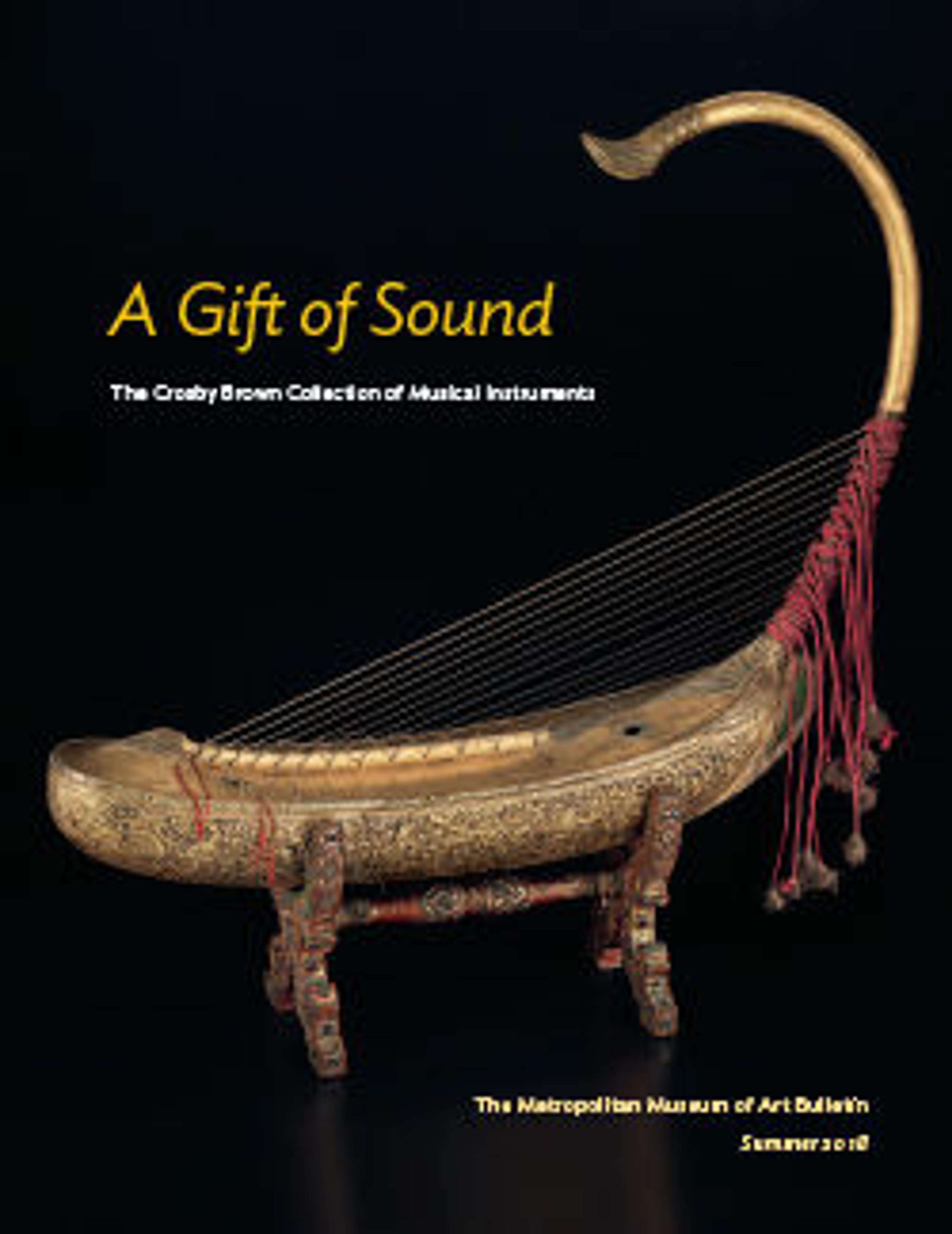Nyonganyonga
The nyonganyonga is a lamellaphone, an instrument consisting of thin metal or split cane tongues mounted on a resonating board or box. Depressing the free ends of the tongues with the thumbs produces a gentle ringing sound, sometimes augmented by jingling objects attached to the board. The instrument may be amplified by holding it in a hollow gourd. Tuning is accomplished by sliding the tongues in or out to change their vibrating length. Lamellaphones are distributed across sub-Saharan Africa and were brought to Latin America by enslaved Africans. They are known by many names that also may be shared with xylophones. Most names have word stems that include -mbila -mira -limba or -rima. Westerners, not recognizing differences in construction, have simplified the name to two regional terms, calling them either mbira or sanza.
Artwork Details
- Title: Nyonganyonga
- Date: ca. 1900
- Geography: Zambesi province, Mozambique
- Culture: Possibly Barwe People
- Medium: Wood, shell, metal, beads
- Dimensions: L 9 3/16 × W. 6 5/8 in. (23.4 × 16.9 cm)
- Classification: Idiophone-Plucked / Depressed
- Credit Line: The Crosby Brown Collection of Musical Instruments, 1889
- Object Number: 09.163.6
- Curatorial Department: Musical Instruments
More Artwork
Research Resources
The Met provides unparalleled resources for research and welcomes an international community of students and scholars. The Met's Open Access API is where creators and researchers can connect to the The Met collection. Open Access data and public domain images are available for unrestricted commercial and noncommercial use without permission or fee.
To request images under copyright and other restrictions, please use this Image Request form.
Feedback
We continue to research and examine historical and cultural context for objects in The Met collection. If you have comments or questions about this object record, please contact us using the form below. The Museum looks forward to receiving your comments.
